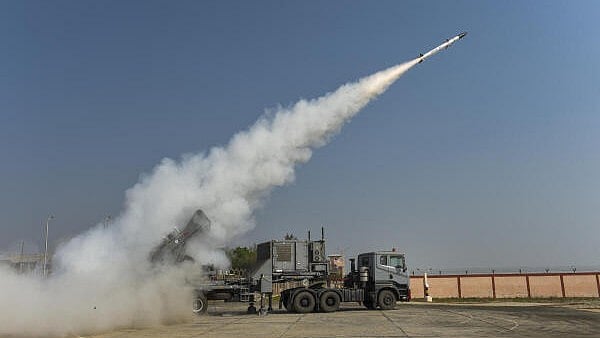
A flight test of the New Generation AKASH (AKASH-NG) missile
Credit: PTI File Photo
New Delhi: From Russian-origin S-400 Triumf surface-to-air missile systems to home grown Akash missiles and several types of Israeli missiles – Indian air defence system carries critical weapons and radars that were successful in foiling Pakistani drone and missile attacks since the hostility began.
Even as Pakistan attempted to escalate tensions by launching missile strikes at Indian military installations across Jammu & Kashmir, Punjab, Rajasthan, and Gujarat, sources said every single one of those missiles was intercepted or neutralised. None reached its intended target.
The integrated counter-unmanned aerial system grid, S-400 Triumf, Barak-8 missiles, Akash surface-to-air missiles and DRDO’s anti-drone technologies came together seamlessly to create an aerial shield that held firm.
India’s rapid, coordinated response showcased the strength of its air defence ecosystem built over the years to secure vulnerable points and vulnerable areas that merit air defence protection.
The pace of acquisition of such weapons to protect these areas increased following the Uri surgical strike and Balakot air attacks.
“The Indian Army has Akash missile systems and Israeli medium-range surface to air missile systems, inducted by all the three services, for stand-off threats. For terminal or point defence the Indian army has guns, very short range air defence system (VSHORDS) like Igla-S and quick reaction surface to air missiles (QRSAM),” an official explains.
Defence officials said the Akash surface-to-air missile air defence system has been effectively used by the Indian armed forces in foiling Pakistani attacks towards Indian targets. Both the Indian Army and Air Force have the missile system all along the Pakistan border.
The S-400 systems have emerged as a key weapon because of its radar that can pick up a target at a distance of 600 km and has four types of missiles to intercept a target at a distance of 120 km, 200 km, 250 km and 380 km depending on the nature of the threat.
Three squadrons of S-400 are part of the IAF’s integrated air command and control system while two more squadrons are expected from Russia.
Man-portable counter drone systems to jam and disable hostile UAVs have been installed in 2024 and many other systems are being procured to counter the drones. There are also Barak-8 missiles actively guarding the front line base.
Officials said both kinetic and non-kinetic means were used to thwart the Pakistani attacks, noting that jammers were also used to make the drones ineffective.
